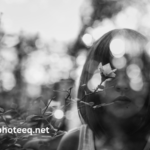Macro photography is a fascinating and rewarding form of photography that can truly bring a new perspective to the things we see every day. It involves taking close-up photographs of small objects and can be a great way to capture tiny details and textures that are often missed. Macro photography is also a great way to explore the natural world and discover fascinating new creatures and environments.
Understanding Macro Photography
Macro photography, also known as close-up photography or micro photography, is the art of taking photographs from a very close distance. This means that the subject appears much larger than it would in a traditional photograph. By magnifying the subject, the photographer can capture intricate details and textures in great detail.
The most common subjects for macro photography are insects, flowers, and small objects. However, it can also be used to capture stunning images of larger subjects, such as landscapes and buildings. Macro photography is also often used to capture the beauty of natural phenomena, such as lightning and rainbows.
Preparing for a Macro Photo Shoot
Before you start taking macro photographs, there are a few things you should consider. First, decide what kind of subject you want to focus on. This will help you determine the types of equipment and settings you need.
If you’re shooting insects, you may want to use a tripod to prevent movement and blurriness. If you’re shooting flowers, you may want to use a macro lens to capture the fine details of the petals.
You should also think about the environment you’ll be shooting in. Is there enough natural light for your subject? Will you need to use a flash or other artificial lighting? Are there any obstacles you should avoid or move?
The Equipment Needed For Macro Photography
To get the most out of your macro photography, you’ll need the right equipment. A digital SLR (single-lens reflex) camera is ideal for macro photography, as it allows you to control the depth of field and take advantage of a range of lenses.
A macro lens is a special type of lens designed specifically for close-up photography. It has a much higher magnification than a standard lens, allowing you to capture intricate details.
If you’re shooting in low light, you may need to use a flash. A ring flash is a great choice for macro photography, as it provides even lighting and minimizes harsh shadows.
You’ll also need a tripod to keep your camera steady and prevent blurriness. If you’re shooting small insects, you may also need a macro rail system to help you move your camera in small increments.
Tips and Techniques for Taking Beautiful Macro Photos
When it comes to taking great macro photos, there are a few tips and techniques you should keep in mind. First, be sure to use a tripod to prevent camera shake and blurriness. Be sure to take your time and be patient; macro photography is all about capturing small details, so you may need to take multiple shots in order to get the perfect shot.
Lighting is also critical for macro photography. Natural light is often best, as it helps bring out the colors and textures of your subject. If you’re shooting indoors, use a diffuser to soften the light and avoid harsh shadows.
Finally, be sure to get as close as you can to your subject. This will help you capture the most detail, and will also help you to create a more interesting composition.
Editing, Post Processing, and Printing
Once you’ve taken your macro photos, you’ll need to edit and post-process them. This involves adjusting the exposure, color balance, contrast, and sharpness of your photos.
When editing your photos, be sure to use a photo editing program like Adobe Photoshop or Lightroom. This will allow you to make more precise adjustments and create a more professional-looking image.
Once you’ve finished editing your photos, you can print them to display or share with others. This is a great way to show off your work and make it more permanent.
Showcasing Your Macro Photos
Once you’ve taken and edited your macro photos, you’ll want to showcase them. One way to do this is to upload them to an online portfolio or photo-sharing site. This will allow you to share your work with a wider audience and potentially get more exposure.
You can also create a physical portfolio of your work by printing your photos and mounting them in an album or frame. This is a great way to show off your work in a more tangible way.
Conclusion
Macro photography is a fascinating and rewarding form of photography that can bring a new perspective to everyday subjects. It involves taking close-up photographs of small objects and can be a great way to capture tiny details and textures that are often missed.







